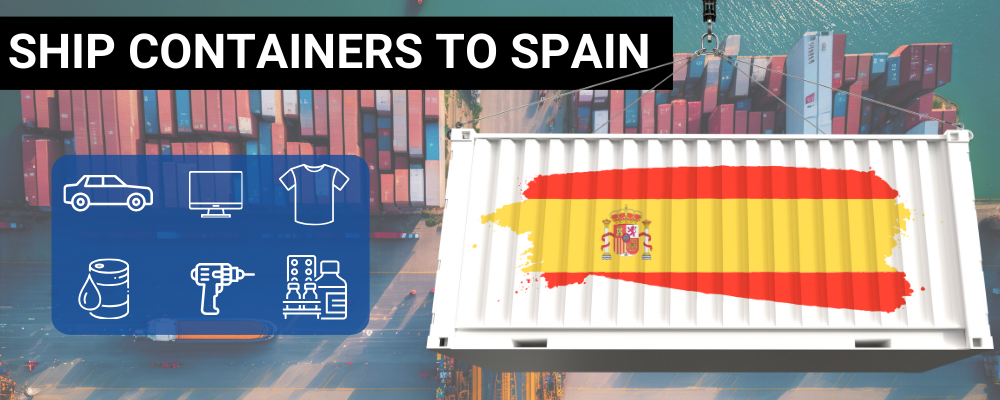
Ranking among the top largest economies in the world, Spain plays an important role in global trade, both in the import and export of goods. This member of the European Union engages in sizeable business with its main trade partners in Europe- Germany, France, and Italy-while also conducting trade with the United States across the Atlantic.
Spanish imports amounted to US$493.4 billion in the year 2022, according to the World’s Top Exports data. More than half of Spain’s total imports are from Germany, France, China, Italy, and the US.
Here’s a list of the top 10 Spain Imports:
Top 10 Spain Imports
Automobiles
The automotive industry is a huge generator of Spain’s GDP. 10% of the country’s GDP is attributed to this lucrative business. Most of the automobile imports, including passenger cars, commercial vehicles, and automobile production materials, come from Germany, France, and Japan.
From the imported automobiles worth $33.6 billion in 2020, Spain recorded an increase to US$42.9 billion (8.7% of total Spanish imports) after two years.
Chemical Products
There is a wide application of chemical products across different industries in Spain, including manufacturing, agriculture, healthcare, construction, and consumer goods production. Organic and inorganic chemicals, fertilizers, and pharmaceuticals accounted for $27.5 billion worth of imports to Spain in 2020.
The main suppliers of these imports are Germany, France, and the United States. In 2022, the importation of organic chemicals was at US$23.9 billion (4.9% of total imports).
Computers and Electronic Products
In this information age, technology is essential for countries’ economies to thrive. Spain acquired computers and electronic products, amounting to $18.9 billion through imports in 2020. China, Germany, and the US are among the highest importers of computer and electronic products to Spain. Records from 2022 show US$40.2 billion worth of Spanish imports (8.2% of total imports) for machinery, including computers.
Electrical Machinery and Equipment
Consumer electronics, industrial machinery, electrical components, renewable energy technologies, and telecommunications equipment are examples of electrical machinery and equipment.
Spain imported electrical machinery and equipment worth $19.7 billion in 2020. The development of manufacturing, construction, and services sectors relies on imports from China, Germany, and Italy. As documented in 2022, a significant increase in electrical machinery import value is noted (US$40.4 billion, 8.2% of total imports).
Plastics
Manufacturing diverse products such as packaging, automotive components, and household items for export and domestic consumption requires plastic. These imports involve raw materials, intermediate products, and finished goods made from plastic materials.
Spain’s imports of plastics totaled $11.7 billion in 2020 and hiked up to US$17.7 billion (3.6% of total imports) in 2022. Mainly, Germany, Italy, and France provide plastic resins and other raw materials.
Textiles and Apparel
Given that Spain exports garments, textiles, and footwear, it naturally needs raw materials like fibers and yarns, which are mostly imported from China, Türkiye, Morocco, Portugal, and Bangladesh.
An estimated $9.5 billion of textiles and apparel was imported to Spain in 2020. Two years later, Spanish importation of clothing and accessories increased to US$11.8 billion (2.4% of total imports) and knitted and crocheted clothing to US$11.0 billion (2.2% of total imports).
Crude oil
Spain is the sixth-largest energy consumer in Europe, but it lacks local production of natural gas or liquid fuel. Due to its scarce oil resources, the country imports oil from Nigeria, Algeria, Mexico, Russia, Iraq, and Saudi Arabia.
The Spanish import value of mineral fuels and oils was at $22.6 billion in 2020 and became approximately US$95.4 billion (19.3% of total imports) in 2022. Various crude oil grades and refined petroleum products such as diesel, gasoline, and kerosene are imported goods.
Steel
Spain ranks as the fourteenth biggest steel importer worldwide due to its prominence in the automotive and weapon-making industries. Nearly eleven million metric tons of steel were imported to Spain in 2018. Meanwhile, iron and steel import record was US$14.8 billion (3.0% of total imports) in 2022.
Optical, Photographic, and Measuring Equipment
In 2020, the import value of optical, photographic, and measuring equipment was $6.9 billion. Primarily, these imports are from Germany, the United States, and China, and they help advance medical and telecommunications technologies. Also, they help facilitate scientific discovery through their usefulness in research, development, aerospace and defense.
Pharmaceuticals
Drugs and other medical products are vital in keeping the healthcare system in check in every nation. Imported pharmaceuticals to Spain were valued at $16.8 billion in 2020 and grew to US$23.9 billion (4.9% of total imports) in 2022. The key suppliers of pharmaceutical products to Spain are Germany, France, and the US.
Conclusion
In conclusion, Spain’s import activities are substantial and diverse, all contributing to the growth of its economy. It has improved its purchasing power over the years and is predicted to increase further in the coming years.
With all its competitiveness and complexities, the global market will continuously see Spain playing the field. The patterns described in this article point to the fact that strategic trade partnerships help sustain key industries in the country- automotive manufacturing, healthcare, and technology.
The importation and exportation of a flourishing country such as Spain will continue to rise to meet the demands of the ever-increasing consumers.








